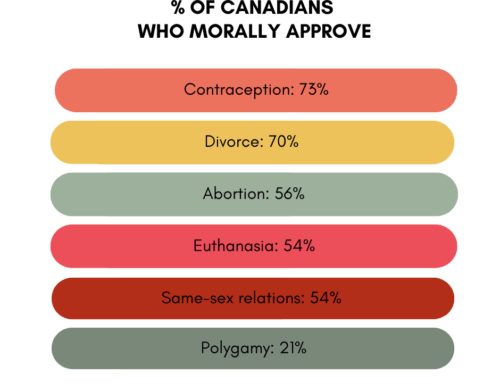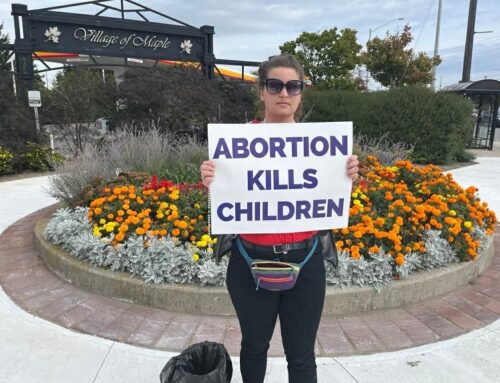Josie Luetke:
In the Spring, a Quebec Superior Court judge ruled that the province must legally recognize multi-parent families. The plaintiffs were La Coalition des familles LGBT+ and three families—a man and two women and their four kids; a lesbian couple and the sperm donor who wants to be a part of his child’s life; and an infertile woman, her husband, and a friend who served as a surrogate mother. (Yeah, I’m shaking my head too—I just wanted to provide examples.)
For once, Quebec was catching up (or, should I say, falling behind), instead of spearheading this degeneracy. The provincial government will actually be appealing this decision, with Justice Minister Simon Jolin-Barrette reportedly saying, “The Quebec model we’ve chosen is two parents.” Other provinces like Ontario, Newfoundland & Labrador, Saskatchewan, and British Columbia, and also Yukon, have already, to varying degrees, crossed into this brave new world.
Despite the lip service being paid to the “best interests of the child,” this steady destruction of the nuclear family is selfish and destructive, especially to minors. It’s a confusing, negative influence. When there are unrelated adults in the home, the potential for abuse and neglect is high.
Much more can be said about repercussions, but the situation strikes me as backwards for an additional reason.
I wonder: How long will it be until Canada’s marriage laws “catch up” to these legal family arrangements and the reality of increased uptake of polyamory (“a form of consensual non-monogamy,” according to a 2024 report from the Vanier Institute of the Family)? How long until polygamy is legalized?
The seeds have been sown.
Ontario’s Bill 28—which extended legal recognition to up to four parents—was titled All Families Are Equal Act.
In the Quebec ruling, Judge Andres C. Garin wrote, “Having a maximum of two filiation links sends the message to multi-parent families and society in general that only families deemed ‘normal,’ with a maximum of two parents, represent family structures that are valid and worthy of legal recognition.”
Marc-André Landry, a lawyer for one of the families, commented, “The law accelerates the social acceptance of situations that might not have been so orthodox before.”
Speaking of — where do we go from here? Logically (or illogically), how would you expect lawyers and activists to agitate next?
Indeed, in 2017, in a report on “Polyamory in Canada: Research on an Emerging Family Structure,” John-Paul Boyd, former executive director of the now closed Canadian Research Institute for Law and the Family, wrote: “In Canada, family is now thoroughly unmoored from marriage, gender, sexual orientation, reproduction and childrearing; the presumption that romantic relationships, whether casual, cohabiting or conjugal, are limited to two persons at one time is likely to be the next focal point of change.”
If we’re providing legal recognition of “diverse” family structures “for” the children in the picture, for birth certificates, custody, inheritance, and whatnot, do you think “throuples”—parents or not—won’t be jonesing for the wide array of marital benefits (and, perhaps more importantly, official validation)?
And how could a judge refuse them, with the legal precedents established?
I remember arguing against same-sex “marriage” over a decade ago (back when I was young and still full of verve) and contending that if “love is love,” then why prevent close relatives from getting married? Why prevent three or more people from marrying each other? Is that not discriminatory? Is that not bigoted?
After all, as Boyd implied, once you remove the consideration of children and reproduction from the definitional understanding of marriage, there is no objective, biological impetus to limit it to two people. (Similarly, one of the main objections to incest — birth defects — is not relevant when, say, we’re discussing two brothers getting “married,” or two sisters.)
Straight-faced, my fellow students at the time would intone that one can’t really love multiple people, like romantically—in a real way, a special way, a way deserving of governmental congratulations and a pop of champagne. (Compare their assertions to a CBC article from last year which began: “You can have more than one friend at a time. You can love multiple family members equally. So, what’s the difference if you’re in a meaningful, consensual romantic relationship with more than one person at once? That’s the general philosophy behind polyamorous relationships.”)
I was laughed at, repudiated, and told in no uncertain terms that gay “marriage” and polygamy are different. There is no slippery slope.
Never mind that we slid from an acceptance of divorce, birth control, abortion, and sodomy; to the legalization of gay “marriage;” to the persecution of Christian bakers for not baking gay wedding cakes; to the adoption of children by gay couples and the proliferation of assisted reproductive technologies and surrogacy; to the chemical and surgical mutilation and castration of minors and drag queen story hours in bubble zone-protected public libraries; and now to multi-parent families. (I left out a bunch of stuff.)
Sure, though, the degeneracy stops here.
Admittedly, there are practical hurdles: do you place a cap on the number of potential spouses, and if so, will this cap immediately crumble with a legal challenge? Is this financially feasible?
Polygamy has been prohibited under Section 293 of the Criminal Code of Canada since 1890, largely in response to its practice within the Fundamentalist Church of Jesus Christ of Latter-Day Saints.
Following the failed prosecution of a couple of its members from Bountiful, B.C., in 2009 and concerns about their freedom of religion, the B.C. Supreme Court heard a reference case about the constitutionality of section 293.
In 2011, the court upheld the ban on polygamy because of the harm it inflicts on children, women, and the rest of society.
Still, a 2019 Fifth Estate investigation uncovered polygamy occurring not uncommonly within Canada’s Muslim population. (Ironically, Toronto Imam Aly Hindy argued that there aren’t enough men available for each woman, in part because we “lose some number of men to homosexual marriages.”)
Polygamy’s association with religious fundamentalism and patriarchalism lingers.
As such, there is a general resistance to it, but one that may be fraying.
In 2006, according to a COMPAS poll, 82 per cent of Canadians were opposed to polygamy’s legalization and just 9 per cent were in favour.
In 2018, according to an Ipsos poll, 25 per cent of Canadians were in favour. When it came to decriminalization, support was higher, at 36 per cent. Amongst those between 18 and 34 years of age, support jumped to 40 per cent for legalization and 50 per cent for decriminalization.
Where might support be at now, seven years later?
While tolerance for polygamy is slightly lower in the United States, Gallup has tracked a fourfold increase in its perceived moral acceptability between 2006 and 2020 (although the question wording did change). In explanation, Gallup senior scientist Frank Newport noted the “general trend of increased liberalism on moral issues,” the decline in “traditional marriage,” and representation of polygamous relationships on television.
Again, approval was higher among young people, who are more likely to be polyamorous themselves. The same can be said of those who identify as LGBTQ+.
So, a generational shift may be imminent.
With polygamy’s prevalence in Africa and the Middle East, it also makes strange bedfellows of two powerful voting blocs—the LGBTQ+ lobby and Muslim community. The latter mounted a robust resistance to the indoctrination of their children in schools (at least before the Israel/Palestine conflict consumed attentions), but the potential legalization of polygamy could endear them to the Liberals again. If the former— gays and company—pioneer this effort under the rainbow flag I expect most objections would drop away.
I’m not a betting man (or woman)—I try to be a praying one. That said… I give it 10 years?




